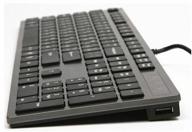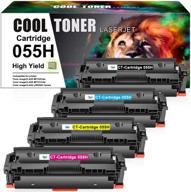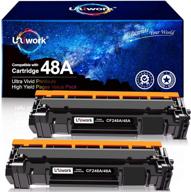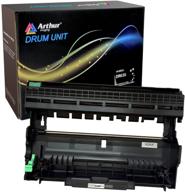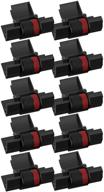Why Printer Ink is So Expensive and What You Can Do About It
Printer ink has become one of the most expensive liquids in the world, often costing more per ounce than fine champagne. This leaves many consumers wondering - why is printer ink so expensive, and is there anything that can be done about it?
Reasons for High Printer Ink Costs
- Small market dominated by major brands like HP, Canon, Epson - lack of competition allows high pricing.
- Ink formulations are complicated and tightly patented - generic inks are inferior.
- Chips in cartridges restrict third-party ink use.
- Printers are often sold cheaply as loss leaders to drive future ink sales.
- Ink is used infrequently, drying up between uses - wastage drives up effective costs.
Saving Money on Printer Ink
While the printer ink market shows no signs of becoming more affordable, there are some steps you can take to reduce your costs:
Use third-party ink cartridges
Compatible cartridges can cost 50-70% less than OEM cartridges. While quality varies, brands like LD are reliable.
Buy extra-high yield cartridges
The cost per page is lower for XL and XXL cartridges. Even if you print infrequently, the savings per page add up over time.
Use a continuous ink tank system
These systems have built-in ink tanks instead of cartridges. Ink is much cheaper bought in bottles. Epson EcoTank is a good option.
Print less and be selective
Analyze your printing habits and only print what you really need. Often digital copies or scans work just as well.
Don't replace cartridges until empty
Many cartridges are thrown away when some ink remains. Use it up before replacing, unless print quality declines.
While printer ink may always be expensive compared to other goods, a few smart strategies can help you reduce the costs significantly. With some care and research, you can keep your printer ink budget under control.
Similar products
Types of Printer Ink and Toner - Advantages and Disadvantages
There are several major types of ink and toner used in printers for home and office use. Understanding the differences can help you choose the right supplies for your specific printing needs.
Liquid Inkjet Inks
Inkjet printers use liquid ink dispensed through microscopic nozzles. Key types of inkjet inks include:
- Dye-based - Small dye molecules, widely used for home/office due to bright colors. Fast drying but less water-resistant.
- Pigment-based - Larger pigment particles, more fade-resistant. Slower drying, good for photos.
- Hybrid - Combines dyes and pigments. Balances qualities of both ink types.
Toner Powders
Laser and LED printers use fine, dry toner powder, either black-only or CMYK colors. Two main toner types are:
- Conventional - Made from plastic resins and pigments. Can cause smoother printouts but difficult to recycle.
- Chemically prepared - Made without plastics for easier recycling. May feel grittier on paper.
Another interesting products
Ink and Toner Comparison
| Inkjet Inks | Toner Powders | |
|---|---|---|
| Cost | Moderate | Low |
| Print Quality | High | Moderate |
| Fade Resistance | Low-Moderate | High |
| Drying Time | Fast | Instant |
Top products in 🖨️ Printer Ink & Toner
Key Considerations
When choosing ink or toner, consider:
- Type of printing - photos vs documents
- Print volume - high yield for more pages
- Usage frequency - avoid drying out
- Durability needs - water/fade resistance
With the right supplies for your printer and usage, you can maximize print quality and minimize costs.
Refilling and Recycling Printer Cartridges - Save Money and Help the Environment
With printer ink being one of the most expensive liquids around, finding ways to reduce the costs and environmental impact of cartridges is important. Two great options are refilling and recycling.
Refilling Cartridges
Refilling empty cartridges can save up to 50% compared to replacement OEM cartridges. There are two main ways to refill:
- DIY refill kits - Come with ink bottles and syringes for refilling. Allow you to refill from home.
- Take to a refill shop - Local businesses can refill cartridges for much cheaper than new ones.
Some tips for effective refilling:
- Reset the chip on the cartridge after refilling so the printer recognizes it.
- Clean out any remaining ink residue before refilling.
- Check cartridge nozzles and clean if needed to maintain print quality.
Recycling Cartridges
Recycling properly disposes of old cartridges and their components:
- Plastics and metals can be reused to make new products.
- Ink and toner residues are disposed safely.
Many manufacturers offer free mail-back programs for recycling. Simply package up old cartridges and ship them out.
You can also take cartridges to local retailer drop-off sites like Best Buy and Staples. Some towns and cities have special recycling days just for printer supplies.
Benefits for You and the Environment
Reusing and recycling cartridges provides big savings and reduces waste. It's a great habit for any eco-conscious printer user.
Choosing the Right Printer Ink or Toner for Your Specific Printer Model
Selecting compatible printer supplies is important for optimal print quality and performance. The right ink or toner for your printer depends on several factors:
OEM vs Compatible Cartridges
OEM (original equipment manufacturer) cartridges are made by the printer brand like HP ink for HP printers. Compatibles are made by third parties to work in place of OEM cartridges. They are less expensive but quality varies.
Ink Type and Chemistry
Inkjet printers require specific ink formulas. Make sure to match dye-based, pigment-based or hybrid inks that your printer requires.
Ink Colors
Check how many individual ink cartridges your printer uses. Many use multiple cartridges for black, cyan, magenta, yellow, etc.
Cartridge Yield
Standard cartridges contain less ink than high capacity XL or XXL options designed for high volume printing.
Toner Types
Laser toner comes in monochrome black only or CMYK color. Match the toner chemistry and fuse grade to the printer.
Refilled Cartridges
Refilled cartridges need to match the OEM model and ink type. Compatible refilled cartridges are also available.
All-in-One Printers
Ink and toner must be compatible with the printer's specific print engine. Check manufacturer guide for details.
Taking a few minutes to ensure you get the designed ink or toner for your printer can save you from headaches and poor quality prints down the road.
Warning Signs You Need New Printer Ink or Toner
Printer ink and toner don't last forever. Running low can lead to poor print quality and damage your printer over time. Watch for these signs that it's time to replace your cartridge:
Faded Colors
As ink or toner runs low, you may notice prints looking lighter or colors becoming less vibrant. Black text may look grayish instead of dark black. Images lose their sharpness and detail.
Streaks and Lines
Ink or toner not distributing evenly across the page results in streaks in areas that should be solid colors or sharp lines cutting across text. This happens when the cartridge nozzle or drum can't deliver an even coating.
Smudges and Blotches
Completely empty cartridges cause ink or toner to smear across the page in dark smudges instead of crisp letters and images. You may see white blotches where ink fails to print entirely.
Thin or Missing Text
Text printed with low ink or toner appears thinner and spottier. Serif and thin fonts get hit hardest. It may fade out entirely in places.
"Replace Cartridge" Error Messages
Your printer software will often show alerts when supplies run low or reach end of life. The cartridge chips tell the printer it's time for a new one.
Sudden Print Quality Issues
If your printer goes from printing perfectly one day to poor quality the next, low ink or toner is likely the culprit.
Infrequent Printing
Ink cartridges left unused for weeks or months at a time can clog or dry out. Replace them as soon as print quality suffers.
Pay attention to these warning signs and you can avoid wasted prints and potential printer damage from bone-dry cartridges. Keep quality high by replacing ink and toner on time.
How to Get the Most Pages Out of Your Printer Ink or Toner
Printer ink and toner can be expensive to replace frequently. With some smart strategies, you can maximize the number of pages you print from each cartridge.
Adjust Printer Settings
Change the print quality settings in your printer software from high resolution to draft mode. This uses less ink or toner per page. Also, increase the font size which uses less ink than smaller text.
Print in Grayscale Mode
Switch color documents to grayscale. This allows you to print using only the black ink cartridge instead of wasting color ink on documents.
Preview Before Printing
Use the print preview function to check for any unnecessary pages you can delete or condense before printing. This simple step can help avoid wasting ink and paper.
Print Multiple Pages Per Sheet
Choose printer options to print 2 or 4 pages condensed onto one sheet, especially for documents. This cuts ink usage significantly.
Use Both Sides of The Paper
Double sided printing reduces paper use and limits wear on the printer from excess printing on one side only.
Refill Cartridges Before They Are Empty
Don't wait until your cartridge is bone dry as this can damage the print head. Refill or replace cartridges while some ink or toner remains.
Clean the Print Heads
Built up dried ink or toner on the print heads leads to waste. Clean them regularly to maximize efficiency.
Buy High Yield Cartridges
Higher capacity XL or XXL cartridges give you more pages per cartridge than standard ones.
With a few optimized settings and careful usage habits, you can stretch each printer ink or toner cartridge to its maximum potential.
Common Printer Ink and Toner Problems and How to Fix Them
Printer ink and toner issues can quickly derail your productivity. Here are some troubleshooting tips for the most common problems.
Faded Print Colors
As cartridges start to run low, print colors look lighter or fade out entirely. Replace old cartridges to restore vivid printing.
Streaks and Lines in Prints
Clean the print heads thoroughly to remove any built up ink or toner residue causing uneven printing. Soak in warm water or use cleaning fluid and soft cloths.
Smudged or Smeared Prints
Make sure paper type matches printer settings. Glossy paper may need changed settings. Let prints dry fully before stacking to prevent smudging.
Toner Not Fusing to The Paper
Check that the fuser unit is clean and heats up fully. Replace any worn or damaged parts. Use printer settings for correct paper type and weight.
Spots and Voids in Print
Clogged nozzles cause missing spots in inkjet prints. Clean print heads and run nozzle check utilities. Replace worn printer heads if needed.
Lines Across Page
Dirty or worn out imaging drums inside laser printers can create banding. Clean the drum unit or install a replacement.
Toner Leaking from Cartridge
Make sure the cartridge is fully secure in the printer housing. Wipe any leaked toner and replace cartridge if a damaged seal is causing leaks.
Addressing ink and toner issues promptly prevents wasted prints and more serious printer damage. Know the troubleshooting steps to keep everything running smoothly.
The Best Printer Ink & Toner Brands For Your Device
When it comes to printer ink and toner brands, there are many options to choose from. Here are some of the best brands according to various sources:
- Brother - Best Overall
- HP - Most Eco-Friendly
- GOTOBY - Best Value
- TRUE IMAGE - Best Third-Party Brand
- Epson - Best for Cheap Ink
- LD Products - Best for Generic Toner
It's important to note that the best brand for you may depend on your specific printer model and usage needs. Additionally, using third-party ink and toner cartridges can save you money, but it's important to do your research and make sure you're buying from a reputable brand to avoid potential issues with compatibility or quality.
What Are The Differences Between Name-Brand And Generic Printer Ink & Toner??
Name-brand and generic printer ink and toner cartridges have some differences that users should consider before making a purchase. Here are some of the differences between the two:
Name-brand cartridges:
Generic cartridges:
It's important to note that the best option for you may depend on your specific printer model and usage needs. Additionally, using third-party ink and toner cartridges can save you money, but it's important to do your research and make sure you're buying from a reputable brand to avoid potential issues with compatibility or quality.
Are There Any Risks Associated With Using Generic Printer Ink & Toner??
Using generic printer ink and toner cartridges may come with some risks that users should consider before making a purchase. Here are some of the risks associated with using generic printer ink and toner:
- Compromised print quality: In many cases, generic ink that's not compatible with your printer could produce blurry lines on the paper, and certain inks may also gradually fade because of their water-based pigmentation when the original manufacturer uses oil-based pigments.
- Printer damage: Poorly molded cartridges might shatter or cause a jam inside the printer, while low-grade ink may clog the printhead quickly. Using low-quality generic cartridges may cause damage to your printer's functionality, which could eventually cost you more in the long run.
- Health risks: Depending on the type of printer ink you use, it could contain various cheap and harmful chemicals that increase the risk of developing respiratory illnesses and other health issues. Specifically, many generic inks contain ink particles, total volatile organic compounds (TVOCs), and styrene, among other dangerous chemicals. Some inks release these chemicals at lower levels that are safe for consumers. But low-quality ink may emit these dangerous chemicals at alarmingly high levels, way above the safety limit.
- Malfunction: Aftermarket products commonly use generic compounds of lower quality, which could lead to menial results and potential damage to your printer’s functionality. Using third-party ink cartridges may cause the printer to refuse to accept the cartridge entirely, and generic products also cause more clogs and overspray, which can damage the print mechanism.
- Reduced print quality: Generic inks tend to produce lower quality prints, especially for photos and artwork. They come with an increased likelihood of blurred lines, banding during color transitions, overspray, and other problems. Decreased print quality can show up in black-and-white printing too; prints made with generic inks tend to have more jagged diagonals and reduced sharpness. These problems make many cheap cartridges suitable only for draft printing and tests. Even third-party inks that provide acceptable print quality may not last very long.
It's important to note that the risks associated with using generic printer ink and toner cartridges may vary depending on the quality of the cartridge and the printer model. It's essential to do your research and make sure you're buying from a reputable brand to avoid potential issues with compatibility or quality.







